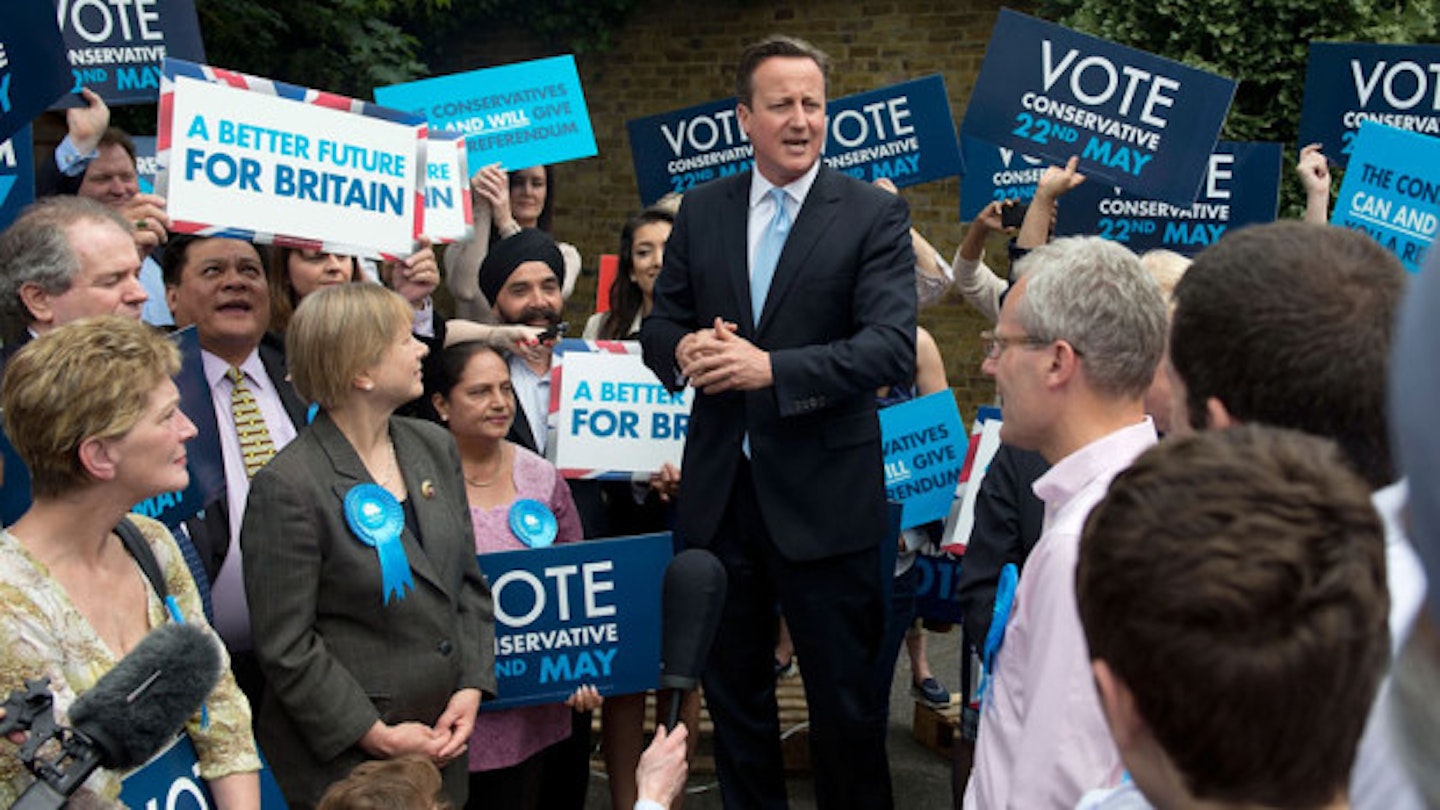Overnight, the number of women sitting around the Cabinet table has doubled. Thanks to the reshuffle that’s being dubbed 'Ladies Day,' when the cosy circle next meets, there'll be twice as many female Cabinet members. Sounds like a feminist revolution in the making? Well – first, a reality check.
Out of 22 cabinet members, just five are women (or 23%.) And for those male MPs moaning that the only way to get promoted is to have a sex change: two of the biggest promotions went to men (Philip Hammond as Foreign Secretary and Michael Fallon as Defence Secretary.)
That said, it’s still a big leap forward. Now he's promoted women like Nicky Morgan (Education Secretary) and Liz Truss (Environment Secretary), and put Anna Soubry, Priti Patel, Esther McVey, Amber Rudd and Penny Mordaunt in more junior roles, David Cameron’s Government looks far more representative of the rest of the country – even if those stats don't always make brilliant reading. (For example, just 19% of board members in FTSE 100 companies are women.)
The chatter in Westminster has already started, with some describing this as just 'window dressing.' The undertone is: these women would not be in this position if it wasn’t for their gender. But having women around the top tables does matter. Government ministers take decisions on behalf of the whole country – of which 52 per cent are women, last time I checked. It’s not hard to see why women engage more in politics when they can see they have a stake in it and believe politicians understand their concerns.
Data from Facebook shows that the majority of people talking about Tuesday’s reshuffle on the site were women aged between 25 and 44
Data from Facebook shows that the majority of people talking about Tuesday’s reshuffle on the site were women aged between 25 and 44. This is simply gold dust to the Conservatives. The Prime Minister’s election strategy team is increasingly concerned the party has a 'woman problem' – with polls showing they are more likely to vote for Ed Miliband than men. There are 14 women in Labour’s front bench team, and a sneaky suspicion that this is attracting female voters is part of the reason for David Cameron’s female-focused reshuffle.
But, for all the talk of PR stunts and cynical vote-baiting, having women in senior positions isn't just tokenistic. A range of experiences and backgrounds is vital when it comes to key decisions on policy. One of the best examples of this is childcare. For years an affordable childcare system has been in the political backwaters – something people pay lip service to, but don’t do anything about. That is why the UK now has the highest childcare costs of any country apart from Switzerland, according to an OECD study.
This may not feel like something that affects you right now, but crippling childcare costs may help explain why – even though girls outperform boys at school on almost every measure –men still dominate the most influential posts in almost every industry. According to the Fawcett Society, women make up 22% of MPs, 17% of FTSE 100 directorships and 13.6% of the senior judiciary. If we want to get serious about challenging this, we need to get serious about childcare.
Thanks to the reshuffle, the number of mothers around the Cabinet table has increased from zero to two. It’s a babystep, but it's young women in their twenties who could really reap the benefit of this in the next decade.
Sophy Ridge is Political Correspondent for Sky News. Follow her on Twitter @SophyRidgeSky
Picture: Getty
This article originally appeared on The Debrief.
